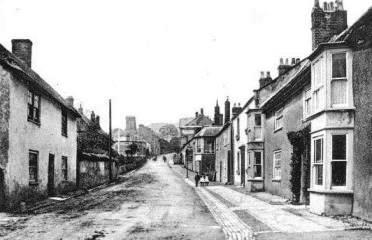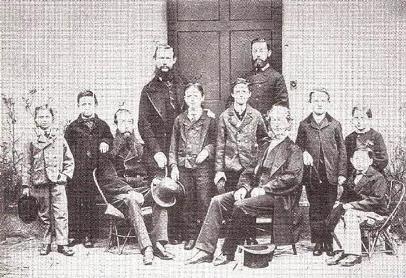john ashton + kezia kenway

John was baptised on 7 October 1838 at the Church of the Blessed Virgin Mary in Donyatt, Somerset. He was the youngest son of Edward Ashton and Sarah Lang. John left Somerset and moved to the south coast settling in Charmouth, a small coastal village located between Lyme Regis and Bridport in West Dorset.
In Victorian times, holidays to seaside towns became increasingly popular with the growing middle class and Charmouth owed much of its prosperity to summer-time visitors. Located on England’s Jurassic Coast, and now a UNESCO World Heritage site, it remains a popular destination for fossil hunters and holiday makers to this day. After a visit to the picturesque village, Jane Austen commented on its charms:
Charmouth, with its high grounds and extensive sweeps of the country, and still more, its sweet retired bay, backed with dark cliffs, where fragments of low rock among the sands make it the happiest spot for watching the flow of the tide.
John married Kezia Kenway in Charmouth several months before the 1861 Census. Kezia was born in nearby Wootton Fitzpaine and baptised at the parish church on 6 April 1840. She was the illegitimate daughter of Sarah Kenway but her father is unknown as his name was not listed on the baptismal record. Kezia was raised by her grandparents and may have moved to Charmouth with her aunt Rebecca and her husband George Taylor.
After their marriage, John and Kezia moved to a cottage on Charmouth Street where John was employed as a cabinet maker and over the next ten years, they had five children. Annie was born in Charmouth in early 1862 followed by George on 2 August 1863, William in 1865, Frederick Kenway in 1867 and finally Frances in 1870.

George (standing far left) & William (standing far right)
The Ashtons were one of the poorest families in the village and often sought relief from the parish. Their financial struggles were longstanding as they applied for Christmas rations from the local Bullen Bread Charity for 10 years but the family was also involved with the local community as sons George and Willian both sang in the church choir and all five children attended the local school.
John and his family were still living on Charmouth Street, known simply as The Street, in 1871. John’s occupation was listed as carpenter & joiner and Kezia also worked as a dressmaker to help support the family. Kezia’s aunt Rebecca and her husband George Taylor were also living on Charmouth Street; George worked as a farm labourer in 1861 but was listed as a Groom & Gardener in 1871. It seems the Taylors were also struggling financially as Rebecca was also working as a Launderess to earn extra income.
In 1876, tragedy struck the Ashton family when John died in Charmouth, aged only 38 years, leaving his wife Kezia and their children in a desperate state. In 1881, Kezia, Frederick and Frances were still living on Charmouth Street. She was working as a Dressmaker, Frederick, who had left school early, was working as a Domestic Servant while 11 year old Frances was still in school. Kezia’s aunt Rebecca had moved to nearby Lower Lea Lane and no doubt offered whatever support she could but the family’s perilous financial situation meant that Kezia’s older children — Annie, George and William — were sent out to service as she could no longer support them all.

Kezia’s daughter Annie was living with her aunt Elizabeth Bowditch and her family in Chard and working as a dressmaker. James Bowditch was employed as a lace hand in the local factory and four other family members were employed as dressmakers or tailors so it is possible the family took in work and Annie used the dressmaking skills learned from her mother to help with the Bowditch family business.
Her 16 year old son William was working as a domestic servant in Honiton, over 10 miles from Charmouth where he was employed as a house boy in the household of Robert Seymour Sillery, a retired Captain in the Ceylon Rifle Regiment, and his family. Eldest son George was still in Charmouth but he was working at the village shop run by local merchant George Mortimer. The large shop included a general grocery as well as a drapery department, china and glass warehouse and a post office and was large enough to employ nine people. George was employed as a grocer’s assistant but his real interest was in the Post Office telegraph and he took every opportunity to learn more about this new technology. His efforts paid off when he obtained a job with a Post Office branch in London one year later.
Kezia Ashton died in Charmouth in 1883 aged only 43 years and her death left 16 year old Frederick and 13 year old Fanny orphans with no means of support. Following his mother’s death, George obtained a transfer to a Post Office branch in Bristol, Somerset and briefly returned to Charmouth to collect his younger brother and take him to Bristol with him. With George’s help, Frederick also got a job at the Post Office as a clerk. There is no record of what happened to Fanny between her mother’s death in 1883 and her own marriage in 1887 although she may have stayed with her great-aunt Rebecca Taylor or gone in to service.
